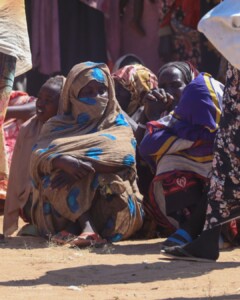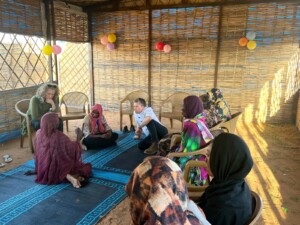Chikungunya fever on the rise in eastern Sudan
A government report has shown more than 10,000 cases of chikungunya* fever in Sudan’s Red Sea state over the past four months.
 The Aedes aegypti mosquito, the main vector for chikungunya and dengue fevers (File photo)
The Aedes aegypti mosquito, the main vector for chikungunya and dengue fevers (File photo)
A government report has shown more than 10,000 cases of chikungunya* fever in Sudan’s Red Sea state over the past four months.
A report by the Sudenese Health Ministry said the fever cases included the localities of Toker, Sawakin, Sinkat and Port Sudan
The incidence rate was about 11 cases per 1,000 people. The report denied that any deaths have occurred due to chikungunya.
Mosquitos
Poor sanitation and contamination of drinking water are blamed for the spread of diseases such as cholera and chikungunya, which have become endemic in parts of the country.
The current outbreak of chikungunya began in August last year after heavy rains hit Sudan’s eastern Kassala state and El Gash river flooded large pieces of land. In October, health sources told Radio Dabanga that the number of patients admitted to health centres and private clinics in the eastern Sudanese state was increasing. Government officials reported that at least 13,400 people in Kassala are infected with the mosquito-borne disease.
The World Health Organization (WHO) confirmed in a report that laboratory tests of samples from the infected people in Sudan’s Kassala state show cases of dengue fever along with chikungunya.
In November, Radio Dabanga reported a rise of rates of chikungunya fever infections in eastern districts of Port Sudan in Red Sea state.
Sources within the health sector in Post Sudan told Radio Dabanga at the time that on average, new infections in the eastern districts exceed 70 cases a day.
Journalist Amin Sinada told Radio Dabanga that the incidence of chikungunya fever increased due to standing water left after floods and rains, which has led to the increase of mosquito breeding.
* Chikungunya is a virus transmitted by the Aedes aegypti mosquito, the same kind that spreads dengue and Zika virus. It is characterised by an abrupt onset of fever, frequently accompanied by joint pain. There is no specific antiviral drug treatment for chikungunya. Treatment is directed primarily at relieving the symptoms, including the joint pain. Most patients recover fully within weeks, but in some cases joint pain may persist for several months, or even years. Serious complications are not common, but in older people, the disease can contribute to the cause of death











 and then
and then